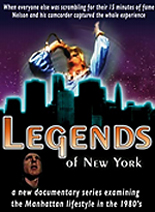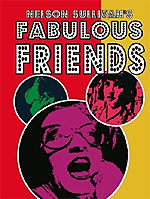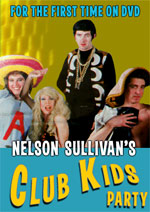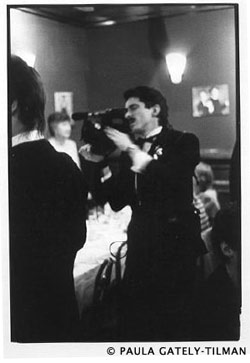
| home |
| nelson's story |
| nelson sullivan channel |
| press kit |
| nelson on dvd |
| linkscontact us |
 a>
a>

| Biography |
NELSON SULLIVAN biography Beyond the confines of downtown New York Nelson Sullivan wasn't particularly famous, but within its boundaries (from 14th Street to Houston Street and from 5th Avenue to Avenue D) everyone knew Nelson because almost every night he was going out and documenting his surroundings. During the last ten years of his life he shot over 1800 hours of tape, capturing himself and his friends in the glossy facade of Manhattan's Downtown life that has been perpetuated in urban legend. Sullivan chronicled the rise and fall of many of his friends and peers including Michael Musto, RuPaul, Dean Johnson, Deee-lite, Ethyl Eichelberger, Sylvia Miles, Michael Alig and countless other denizens of a demimonde being ravaged by AIDS, heroin, and anomie. Nelson himself died tragically from a heart attack on July 4, 1989- only three days after quitting his full time to so that he could produce his own cable television show of his footage. Originally from a grand old family in the deep south, Nelson moved to downtown New York in the early seventies to escape the prejudice and claustrophobia of small town life. As a classical pianist and composer, he also came to New York to make it. But no sooner had he arrived than he noticed that Downtown Manhattan was the mecca where everyone came to make it - not just from all over the country but also from all over the world; 'If I can make it here, I'll make it anywhere' as Frank Sinatra sings in 'New York, New York'. a portrait of downtown Nelson knew, because he was witness to it, that Downtown was a new society being born. Downtown is where it all began - 'It' being the idea of everyone being famous for fifteen minutes. He saw in Warhol's Factory, with its freaks, parasites, and their limitless capacity both for self-invention and self-destruction, the beginnings of Downtown. It wasn't just another bohemia, but a post-pop society driven and unified by the desire for fame. In documenting this birth he created a video equivalent of Vasari's 'Lives of the Artists', especially valuable given the ephemeral nature of the crucible in which these events took place: club culture. It was a renaissance time. Studio 54 was the laboratory inferno where disco was forged. Punk was created at CBGBs by the Ramones and New Wave fashioned by Blondie and Talking Heads at the Mudd Club. Madonna first performed at Danceteria, the club opened by Rudolf, a former German Laundromat manager from Rio. There was an art boom, with east village art galleries mushrooming and showing Graffiti, Neo-Geo, Keith Haring and self-proclaimed con artists like Mark Kostabi. A prolific, yet relatively unknown videographer, Nelson Sullivan was a visionary. His revolutionary style is a combination of cinematic and in-camera editing techniques. Carrying the camera at arm's length, he was able to gracefully move about his subjects, embracing them on tape. His technique is so fluid that viewers often see Nelson walk across the screen and wonder who's pointing the camera. Nelson's relationship with his audience is so synergetic at times as to simulate personal memory as opposed to dispense information. Nelson Sullivan's oeuvre is more than one man's diary. It is a portrait of society's misfits gathering to create something rich and strange from almost nothing and against all odds. Nelson knew he lived in interesting times, and he worked hard to capture more than a video freak-show. In addition to taping up-and-comers such as RuPaul and Michael Musto, Sullivan sought to tape New York’s outcasts, the wannabes, the has-beens, and the never-will-be’s. Whether his subjects were on the way up, or trapped in a downward spiral, Nelson strived to candidly capture life under the shadow of the Statue of Liberty. These videos were Sullivan's labor of love; they provide a window to the past, and invite viewers to experience the lows and highs of an almost mythical era. It is the essence of the American dream, or as Nelson said, "The pravda of the matter."
|
